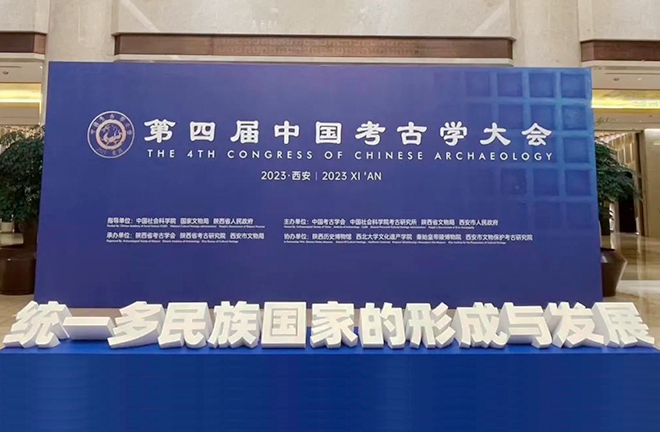4th congress of Chinese archaeology held in northwest China

The 4th Congress of Chinese Archaeology Photo: CHINESE ARCHEOLOGY
The Fourth Congress of Chinese Archaeology, themed “the formation and development of a unified multiethnic country,” was held from Oct. 23 to 25 in Xi’an, northwest China’s Shaanxi Province. More than 800 archaeologists from countries such as China, Germany, the United Kingdom, Italy, Pakistan, Uzbekistan, Mongolia, Russia, Japan, and South Korea conducted multiple forms of discussions on the theme.
During the parallel sessions of professional committees, experts and scholars from 27 committees submitted a total of 564 reports, covering a wide range of fields including zooarchaeology, archaeobotany, archaeology of human skeletons, archaeology of emerging technologies, public archaeology, archaeology of the Silk Road, and digital archaeology. These reports comprised the latest major findings from important archaeological sites regarding the origins of Chinese civilization and the formation and development of China into a unified multiethnic country. They further served to present related frontier research outcomes and multidisciplinary research theories and methodologies. In addition, a Chang’an Forum and 27 public archaeology lectures were held.
According to Chen Xingcan, chairman of the Society for Chinese Archaeology (SCA), director of the Institute of Archaeology at the Chinese Academy of Social Sciences (CASS) and a CASS Member, since the start of the new era, the major project “Chinese Archaeology” has made remarkable achievements, the project to trace the origins of Chinese civilization has progressed steadily, and projects related to the formation and development of China into a multiethnic country have gradually been implemented.
Moreover, the pace of archaeology “going global” has intensified, and sci-tech archaeology and underwater archaeology are developing rapidly. Quality TV programs produced by China Media Group, including “Archaeology in Progress,” “Open Class of Archaeology,” “Chinese Archaeology Assembly,” and “In Search of Ancient China” are on air, expanding the social influence of archaeological achievements made in China, Chen said.
Chen further emphasized the immense significance of these endeavors in constructing civilizational theories with Chinese characteristics and advancing research on tracing the origins of Chinese civilization. Simultaneously, they have played a crucial role in promoting the widespread dissemination of fine traditional Chinese culture and injecting intellectual vigor into the pursuit of building a modern Chinese civilization.
The Congress of Chinese Archaeology is the largest, most extensive, and highest-level international academic conference staged by the Chinese archaeological community. Comparing this year’s congress with previous conferences, Chen said that four new professional committees were introduced, involving archaeological heritage and archaeological studies on tombs, the Great Wall, and the Grand Canal, respectively. This arrangement fully reflects the continuous improvement of the systems for fields of study, academia, and discourse of Chinese archaeology, and the deepening of related research content.
Under the guidance of CASS, the National Cultural Heritage Administration, and the Shaanxi Provincial People’s Government, the Fourth Congress of Chinese Archaeology was co-hosted by the SCA, the Institute of Archaeology at CASS, the Shaanxi Provincial Cultural Heritage Administration, and the Xi’an Municipal People’s Government.
Edited by CHEN MIRONG
